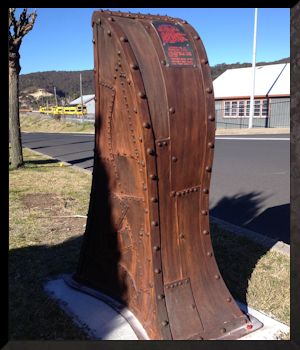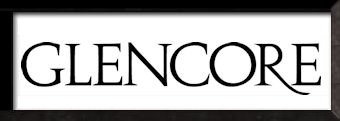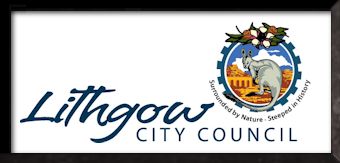|
|
|
|
||||||
|
|
The Lithgow History Avenue Project represents a partnership between Lithgow City Council and Glencore Coal Community Social Involvement Program that dates back to 2008. In 2008 Council prepared a Cultural Plan which developed the concept of a cultural precinct for Lithgow around the key landmarks of Hoskins Church, Hoskins Memorial Institute, Eskbank Station, Eskbank House, Blast Furnace Park and Lake Pillans recreational area, as well as buildings and facades along the top of Main Street. In 2010 a more detailed study into the Cultural Precinct concept was undertaken, with funding support from Glencore. This study homed in on the heritage, aesthetic and cultural values of the buildings and streetscapes within the precinct. It noted the lack of visual amenity and inadequacy of directional and interpretive signage within the precinct and particularly along Inch Street and that there was no means of drawing pedestrian and vehicular traffic through the key heritage sites along Inch Street, meaning that locals and visitors to the town miss the opportunity to explore the area. Following completion of the Cultural Precinct Study and with further funding from Glencore, Council refined the concept of Lithgow History Avenue. Local metal artist Phil Spark was engaged in 2012 to develop and implement the public art concept for History Avenue. Phil has developed a public art project that stretches from the top of Inch Street, past the Eskbank Station and Eskbank House to the entrance of Blast Furnace Park. Lithgow History Avenue is not yet complete. Future stages of the project will include creation of a sculpture park on the Blast Furnace Park site and possibly creation of a pedestrian and cycle way across the disused Inch Street railway bridge linking Eskbank House, Blast Furnace Park and Lake Pillans. History Avenue is best appreciated by walking, viewing the artwork up close and reading about Lithgow’s amazing history and heritage. Council wishes to extend its thanks to Glencore for its generous support for this project; to Phil Spark for his inspirational and creative design; to the artists who produced the top pieces, to Dr Naomi Parry for developing the content for this website and; to Ian Milliss for his assistance in developing the original concept of History Avenue. ABOUT THE LITHGOW HISTORY AVENUE PROJECT BY DESIGNER PHIL SPARK
My involvement in this project began a couple of years ago when I was invited to submit ideas for public artworks that were to be sited along Inch St. The work was to celebrate and bring attention to an important heritage precinct of Lithgow including Eskbank Station, Eskbank House and Blast Furnace Park. When developing a public artwork, as opposed to private/gallery work, an idea has to coincide with the reality of the site. The most imaginative and beautiful work may be impractical if it needs a guard to protect it from damage or the public from injury. I really liked the idea of an outdoor gallery along both sides of Inch Street so I began with this but after a minimal amount of work it seemed obvious that traffic would be a problem - it would be a gallery with a road running down the middle of it. I then began to think about the street itself and persuading people to walk down to the Blast Furnace. I have worked at the State Mine Museum for about 12 years and driven down Inch St most working days but walking is a completely different thing. From the Workies Club with the busy rail yard on the right, past the dog track, Eskbank House, under the derelict rail bridge to the Blast Furnace ruin. The walk is different depending on the time of year, the weather, the light and so on. I proposed a time line – a series of 20 posts with small sculptures on the top. This is a simple response to the original brief but I thought of it as a frame work in which would provide what I wanted:
Time Line The industrial history of Lithgow and the steel works is a European story and so whilst acknowledging indigenous presence, I decided to start the time line with the European crossing of the mountains in 1813 and end with the closing of the Blast Furnace in 1929. This encompasses an era of incredible technological progress and I began with a list of 50+ events which, with the help of a historian, managed to cut to 22. Most dates are obvious events – first coal mined, first iron made etc. Some because they had good photographs - there is the picture of the destroyed car and what appears to be a despondent Mr Hoskins connected with the Lithgow riot (1911) for example. Some because I wanted them to be there. The great exhibition (1851) was a remarkable event that I would have liked to have attended. A favourite date is 1880 (Ned Kelly hanged. First meat from Lithgow exported to England). Kelly seems to me to be an almost legendary, Robin Hood like figure and I was surprised to find him a contemporary of events that show Lithgow as a developed industrial centre able to process, chill and transport meat halfway round the world. Rivet Style
Post Top Sculptures I envisaged these as simple demonstrations of what could be done with steel and I wanted to involve other metalworkers. I wrote an invitation and spoke to people, largely blacksmiths, who were involved in the Lithgow Ironfest. In all fourteen people were involved in making the twenty two sculptures. Some people stuck with the original idea, but others developed a work that was relevant to a particular date. For the first post I asked Ron Poulton to make me a few leaves, he developed this into an entire tree. Other Work The Posts are quite formal and precise as they need to fulfil certain tasks. Apart from the usual constraints of public work the first work only needed a flat bit to attach a small plaque. I began with a very formal almost rectangular shape, an angle iron frame with a riveted plate infill. But angle iron really doesn’t like to bend in plane (flat) and tends to wander. I decided to use this trait and pretty well let the frame do what it wanted and curved the infill plate to fit. The seat at the Eskbank House corner uses the same style. I wanted to persuade the viewer to interact with the work, and so a seat. Couples can sit and be photographed. It’s not a very comfortable seat but it will hopefully lead to straight backed formality reminiscent of the era that this project is dealing with. The inspiration for the two halves comes from the photographs of the Harbour bridge arch before it was joined.
The text on this site has been written by historian Dr Naomi Parry, from the collections of the:
Key sources, provided with the assistance of Ray Christison, are quoted on every page. Digitised newspaper articles on Trove are linked within the text. The names of people on the site are linked to Australian Dictionary of Biography entries, wherever possible.
|
|
||||||
|
|
|
|

 I wanted to develop a unifying style for the various bits of the work. There is a story that Lithgow provided the rivets for the Harbour bridge construction. The story is hard to verify but the style of riveted construction provides an interesting design focus and evokes the era that the project is dealing with. The design of the posts comes from a walk across the harbour bridge, the wreck of an old steel trawler and remnants at Blast Furnace Park. Hot riveting was superseded by welding in the 1940-50s and is a “dying trade” but there is a ship (the John Oxley) being rebuilt in Sydney with a riveted hull. I visited and learnt. I borrowed a pneumatic hammer from a local workshop, managed to buy some and make other rivets. This joining technique forms the central visual thread. The work grew from this via sketches, drawings, samples and prototypes.
I wanted to develop a unifying style for the various bits of the work. There is a story that Lithgow provided the rivets for the Harbour bridge construction. The story is hard to verify but the style of riveted construction provides an interesting design focus and evokes the era that the project is dealing with. The design of the posts comes from a walk across the harbour bridge, the wreck of an old steel trawler and remnants at Blast Furnace Park. Hot riveting was superseded by welding in the 1940-50s and is a “dying trade” but there is a ship (the John Oxley) being rebuilt in Sydney with a riveted hull. I visited and learnt. I borrowed a pneumatic hammer from a local workshop, managed to buy some and make other rivets. This joining technique forms the central visual thread. The work grew from this via sketches, drawings, samples and prototypes.
